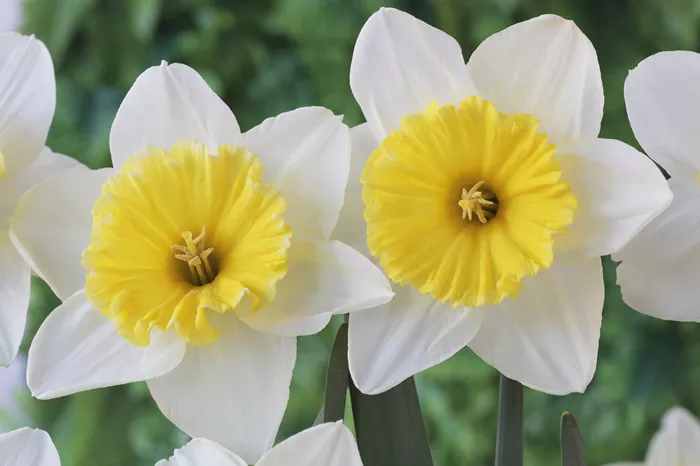Daffodils, cherished for their vibrant spring beauty, may be quietly disappearing from our gardens, with rare varieties slipping into obscurity. Experts are on a mission to track down these unique blooms, including the bright “bonfire yellow” daffodil from Sussex, once synonymous with Bonfire Night celebrations.
Plant Heritage, a conservation charity, has highlighted the risk of losing these varieties if they aren’t found and nurtured. Gwen Hines of the charity points out that beyond their springtime charm, daffodils could one day offer vital compounds for scientific advancements, such as galantamine, a treatment for Alzheimer’s disease.
Daffodils, believed to have been brought to Britain by the Romans, now come in an array of approximately 30,000 varieties in all shapes and sizes, including the familiar yellow as well as white, orange, and pink.
The Royal Horticultural Society (RHS) has joined efforts to locate missing daffodils. One particularly sought-after specimen is the Sussex Bonfire, a bright orange-yellow flower linked to Lewes’ Bonfire Night. Known to have been bred by local horticulturist Noel Burr, it has not been seen for over 20 years. Roger Parsons, a Sussex horticulturist, remains hopeful that the daffodil may still be growing in someone’s garden, and finding it could preserve its genetic heritage for future breeding.
Another lost gem is the Mrs R O Backhouse daffodil, named after the renowned plantswoman Sarah Backhouse. This daffodil, with its salmon-pink trumpet and ivory petals, was one of the first to showcase a pinkish hue. Although it exists in national collections, its exact location is unknown.
The Mrs William Copeland daffodil, a heritage variety with large white flowers, is also part of this search. Named after William Fowler Copeland’s wife, it hails from the late Victorian era, a time when daffodils were highly fashionable.
The RHS is encouraging the public to record sightings of daffodils this spring, as mapping these flowers could help scientists understand how they are adapting to changing climates. Dr. Kálmán Könyves of the RHS highlights the importance of tracking the blooming times, which could offer insight into how climate shifts are affecting plant life.


